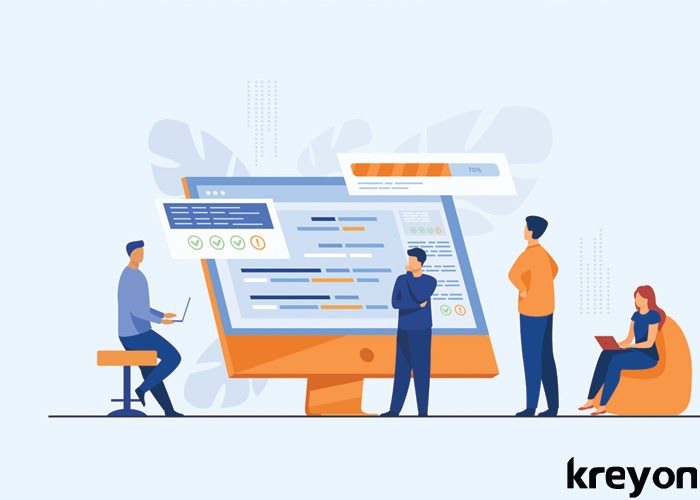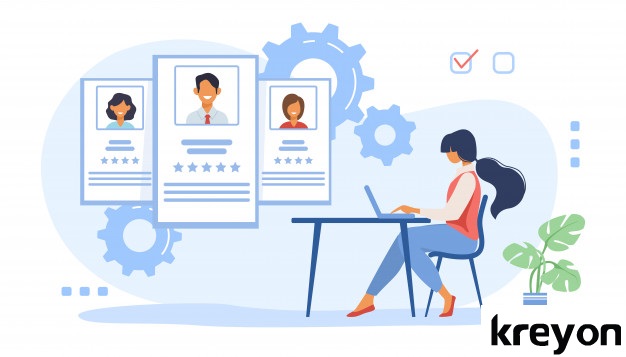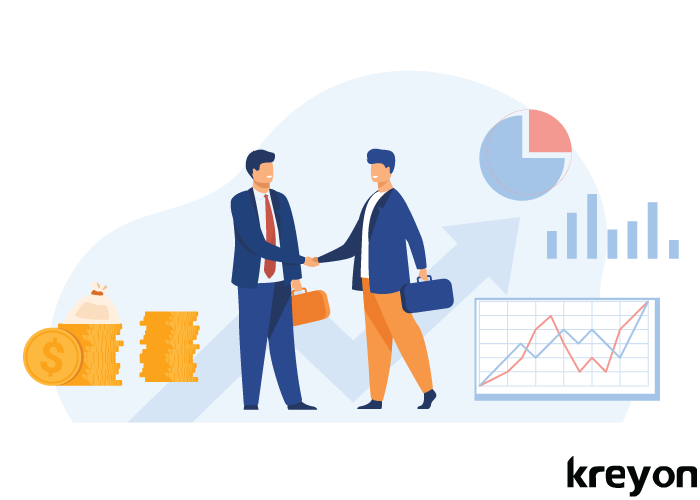HR SaaS: 5 Ways to Build New Digital Capabilities with HR SaaS

The HR SaaS provides a framework for organisations to build digital capabilities in their organisations, experiment and optimise their team management processes. Teams around the world are depending on software as a service tools to get things done, collaborating remotely and working with greater efficiency than before. This is a pertinent phase where companies are able to reflect on their processes and make them future ready.
The capabilities of advanced machine learning algorithms helps organisations predict events like employee attrition, anomalous activities, skill gaps and star performers etc. Here are some of the ways organisations are building their digital capabilities using HR SaaS.
1. Dynamic Process Management & Reviews
An HR software should be able to digitize processes in an organisation. Many of the traditional HR processes are increasingly driven by algorithms and software. Organisations are not complaining as they see tangible improvements. An organisation can benchmark its processes end to end, monitor and optimise things as per its objectives.
With the HR system in place, an organisation can use performance metrics to review its processes. Some of the metrics that can be used for measuring the outcomes of the HR system are as follows:
a) Time for hiring candidates
b) Joining ratio for candidates
c) Average revenue per employee
2. Digital Operations & Workforce

How does your organisation ensure that employees are focusing on the right things? Are they working as efficiently and productively as they can? What tools are being used for measuring employees performance? Are employees aware of the performance expectations versus where they stand? The answer to the questions lies in the use of technology. When an HR system is used, organisations can answer these questions with real time data.
A digital workforce needs to be connected and collaborative. They need to experiment, iterate and build things that clients adore. A digital workforce is very much in tune with the needs of the times and delivers solutions proactively. Many times it involves cannibalising your own products, but that is the only way to deal with disruptions.
The digital organisations are up to date with online work policies and tools. These organisations are able to synchronise with on demand workers and remote work routines across the world. The digital workforce is exquisitely adept at working with machines, for e.g. organising job interviews through chat bots & robots etc.
3. Outcome Economy
The digital companies are driven by concrete outcomes. The value of work is evaluated based on the economic returns and future prospects for the company. No company wants to spend its resources without tangible ROI for it.
The HR SaaS can track employee timesheets, personal performance and goals etc. Overall, it can help an organisation to get best output for its resources employed. An HR software can help management decide the best employees for a project based on skill recommendations, past work and performance.
Organisations can compute project profitability analysis, average employee time on projects, average billing rate for work, employee performance metrics vis-a-vis allotted projects etc. The HR SaaS enables organisations to ensure they commit resources to projects with definite outcomes geared for success.
4. Disrupt & Reskill

Every organisation needs a concrete strategy to reskill its workers. The problems of the future cannot be solved by the skills of the past. HR Software can help an organisation proactively plan and implement its training schedule. The AI based algorithms can provide personalised recommendations for employee training, skillset upgradation and measure performance.
The HR SaaS can also help organisations derive and calculate the economic impact of reskilling for teams. As organisations continue tapping into global resources for learning, it is imperative that companies set-up a learning hub for its teams. The HR software can incentivise learning for employees and help them improve their work performance too.
Nokia & Sony had similar projects under development years before iPod & iTunes were launched in 2001. But Nokia and Sony resisted launching these products due to fear of cannibalising their own business. Later they got disrupted anyway when Apple launched them & swept away the market.
5. Reducing Human Bias

The HR professionals spend countless hours on administrative work, searching through resumes, shortlisting and selecting candidates etc. Many of these business functions can be handled through automation and HR software. It eliminates and reduces human bias in the decision making process.
The HR software can work with qualified data sets to explore employees. It can help many services like the recruitment of candidates, project allotments to employees and performance reviews. Organisations reduce time, efforts and money for making these HR decisions. More importantly technology is neutral and helps organisations make the best decisions for them.
Kreyon Systems has great expertise in building HR software tailored to organisational needs for maximum impact. For any assistance or implementation queries for business software, please get in touch with us.
